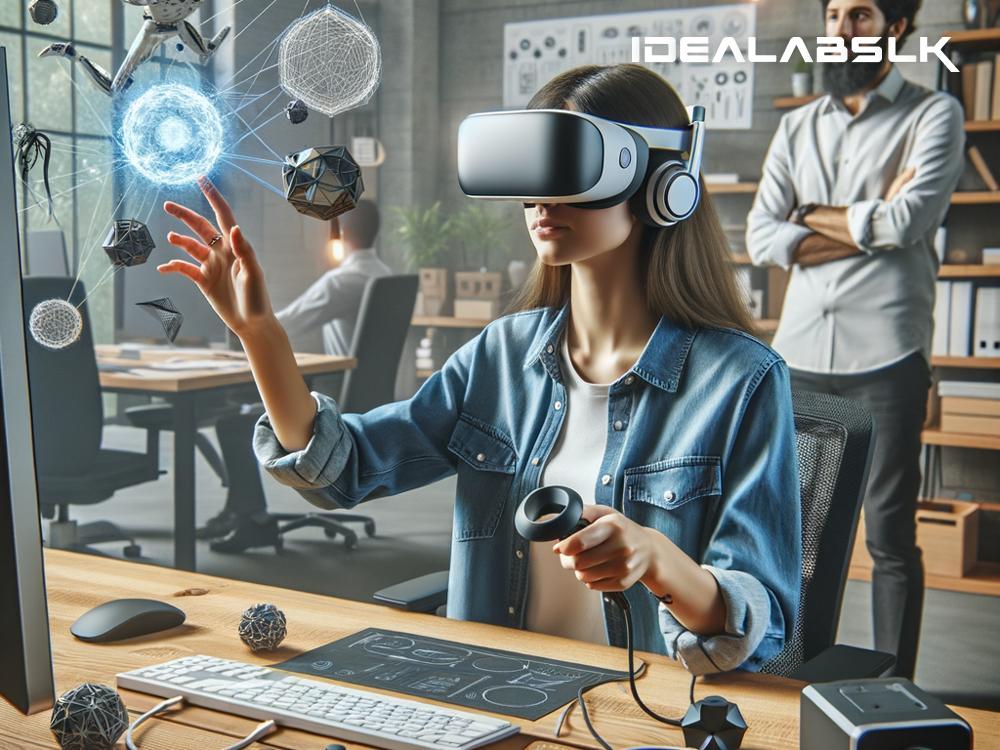Understanding VR Hardware for Immersive UX Design
In today's tech-savvy world, Virtual Reality (VR) is not just a buzzword but a gateway to experiencing new dimensions right from where we are. Imagine putting on a headset and being transported to a virtual world where you can interact with objects, environments, and even other people in ways that feel real. That's the power of VR. However, to create these captivating experiences, understanding the hardware behind VR is crucial, especially for those interested in crafting immersive UX (User Experience) designs. Let's dive into the basics of VR hardware in simple English.
The Heart of VR: The Headset
The most visible part of VR hardware is the VR headset. These headsets look like bulky goggles and are the windows into the virtual world. They track your head movements, allowing the virtual environment to react accordingly. When you look up, down, or around, the scene before your eyes changes as if you were really there. The main players in the VR headset market include Oculus Rift, HTC Vive, and PlayStation VR, each offering different features, but the goal is the same: to make you feel like you're in another world.
Seeing Is Believing: Display and Lenses
The display inside the headset is what shows you the virtual world. Most VR headsets use either one display shared between your eyes or two displays (one for each eye). The quality of this display matters a lot because it impacts how real the virtual world appears. Higher resolution means clearer, more lifelike images.
The lenses placed between your eyes and the display play a significant role, too. They focus and reshape the image for each eye, creating a stereoscopic 3D effect. This means each eye sees a slightly different angle of the same scene, giving a depth perception similar to how we see the real world, which is essential for a truly immersive experience.
Tracking Your Move: Sensors and Controllers
How does the virtual world know when you're moving? That's where sensors come in. Most VR headsets are equipped with a range of sensors, including accelerometers, gyroscopes, and magnetometers, which track your head movements with astonishing accuracy. Some systems, like the HTC Vive, use external sensors placed in your room to track your position more extensively, allowing you to walk around in the virtual space.
Controllers are another vital piece of VR hardware. They are your hands in the virtual world. With buttons, triggers, and motion sensors, these controllers let you grab, move, and interact with objects in VR. The design and functionality of these controllers are key to creating a seamless and intuitive user experience. Some advanced controllers even provide haptic feedback, simulating the sense of touch by vibrating in response to your actions.
Immersion Beyond Sight and Sound: Haptics and Treadmills
Speaking of touch, haptic feedback technology is advancing quickly, opening up new dimensions for immersive UX design. From wearable gloves to full-body suits, these devices simulate the feeling of touch, resistance, and temperature, making the virtual experiences even more real.
Another fascinating development in VR hardware are VR treadmills. These platforms allow you to walk or run in any direction while staying in the same spot in the real world. They're especially useful for exploration-based VR experiences or training simulations that require movement over large areas.
Powering the Experience: The Computer or Console
Behind every great VR headset is a powerful computer or gaming console. The device needs to process high-quality graphics at very high speeds to maintain the illusion of reality. Any lag between your actions and the response in the virtual world can break the immersion and even cause motion sickness. That's why ensuring your computer or console meets the VR headset's requirements is important for a smooth experience.
Conclusion
VR hardware is the foundation upon which immersive virtual experiences are built. Understanding the capabilities and limitations of different components, from headsets and displays to sensors and controllers, is essential for anyone interested in designing or developing VR experiences. As technology advances, the possibilities for what can be achieved in VR expand, making it an exciting field full of potential. Whether you're a designer, developer, or just a VR enthusiast, keeping up with the latest in VR hardware is key to unlocking new worlds of experience.

